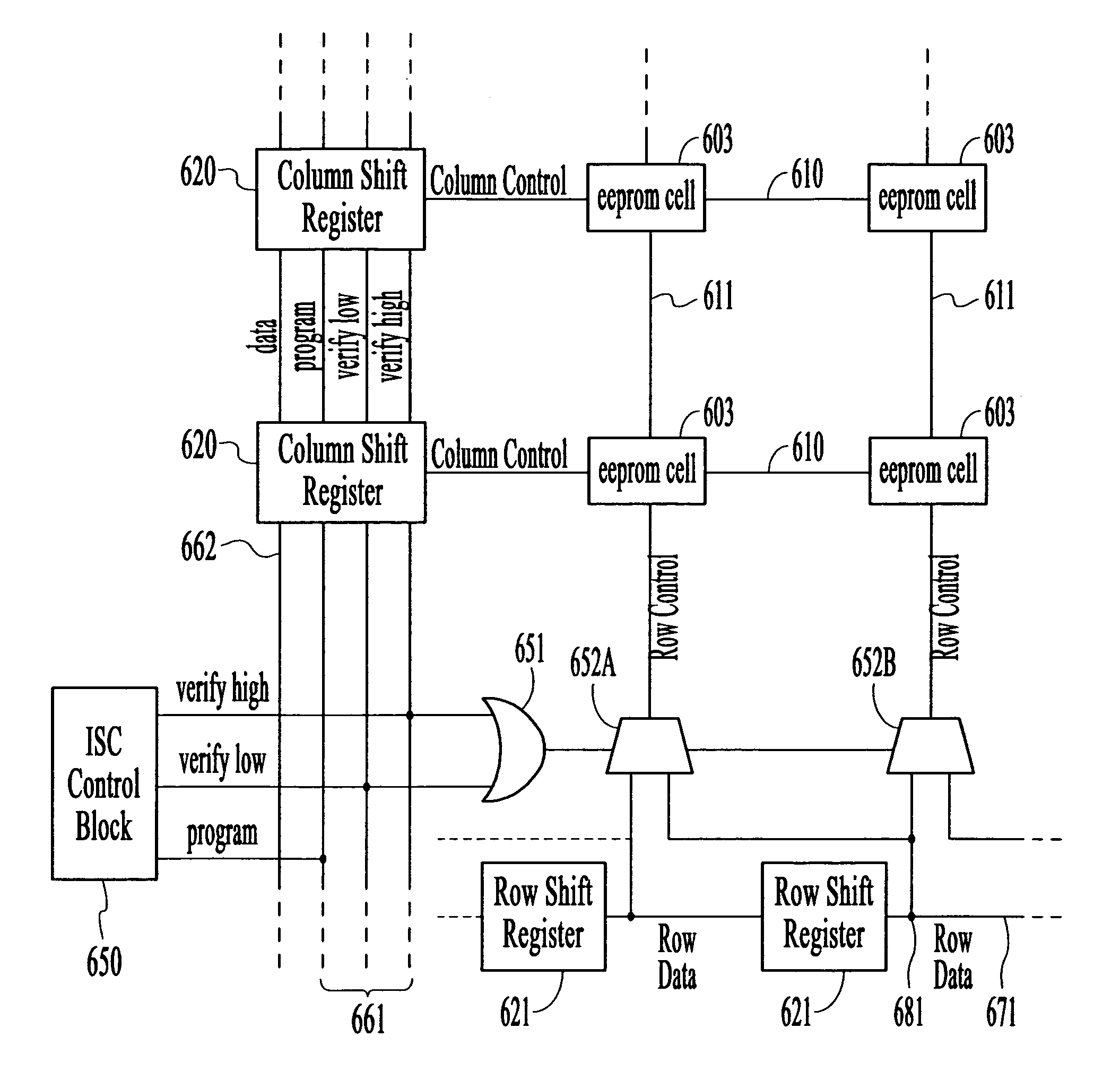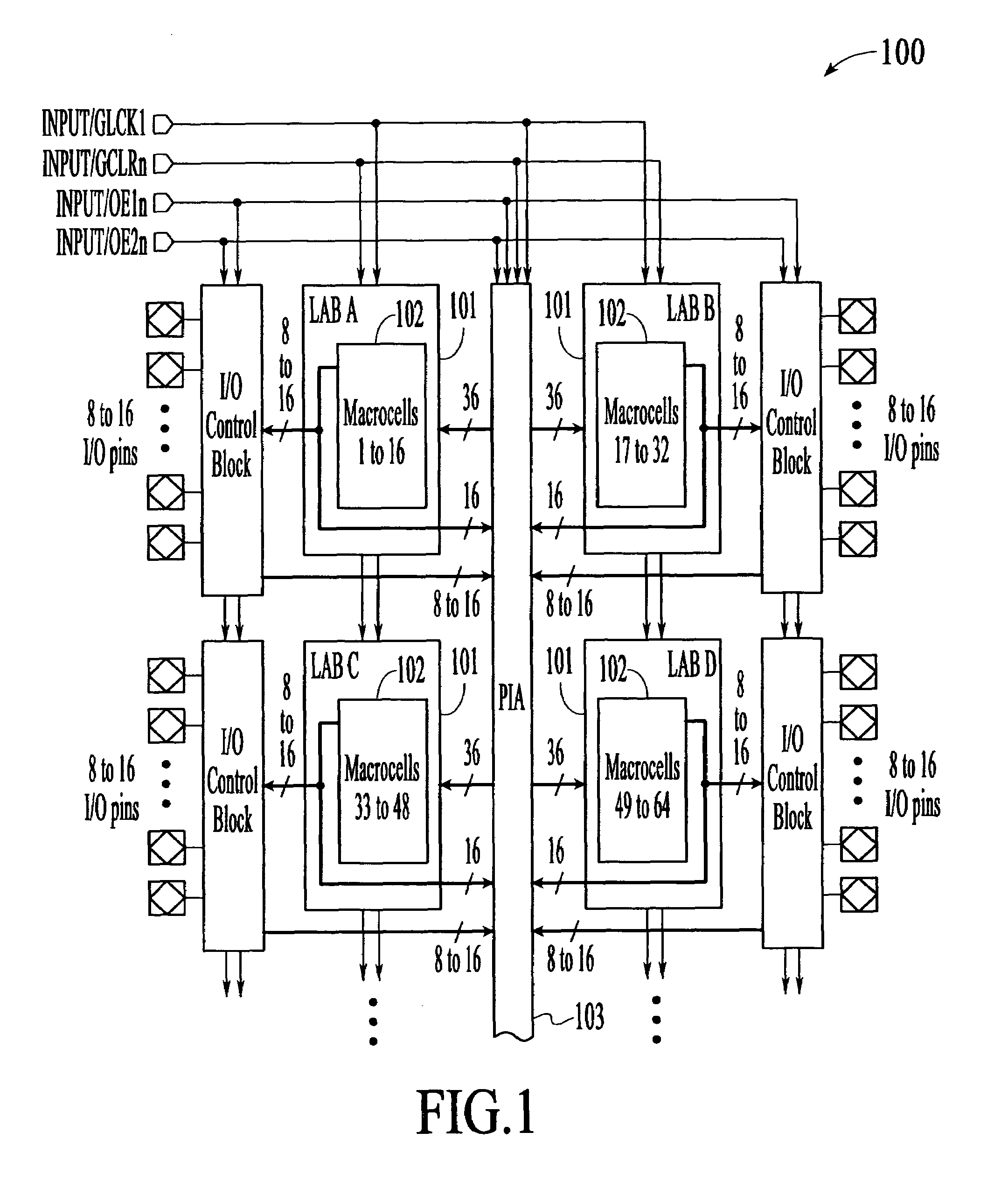Techniques for programming and verifying data in a programmable circuit
a technology of a programmable circuit and a verification circuit, applied in the direction of coding, instruments, code conversion, etc., can solve the problems of undesirably long delay time and high vector count of prior art techniques for programming and verifying data in a programmable circuit, undesirably long program and verification time delays, etc., to reduce time delays and vector counts
- Summary
- Abstract
- Description
- Claims
- Application Information
AI Technical Summary
Benefits of technology
Problems solved by technology
Method used
Image
Examples
Embodiment Construction
[0018]FIG. 1 illustrates a diagram of a programmable logic device (PLD) 100. PLD 100 includes a plurality of logic array blocks (LABs) 101. Programmable interconnect array 103 routes signals between LABs 101. PIA 103 includes interconnection conductors and memory elements such as EEPROM cells. Each LAB 101 includes a set of sixteen macrocells 102. Each macrocell includes a plurality of non-volatile memory cells such as EEPROM cells. The memory cells are typically arranged in a series of rows and columns. Data can be programmed into the memory cells from column shift registers (not shown).
[0019]Input and output signals can be routed between the I / O pins and the macrocells 102 via the I / O control blocks. The I / O control blocks are coupled to receive two output enable signals (OE1n and OE2n). PLD 100 also includes a clock signal GCLK1 and a clear signal GCLRn.
[0020]FIG. 2A illustrates a simplified diagram of a programmable circuit 600. Programmable circuit 600 may, for example, be a PL...
PUM
| Property | Measurement | Unit |
|---|---|---|
| delay time | aaaaa | aaaaa |
| of time | aaaaa | aaaaa |
| period of time | aaaaa | aaaaa |
Abstract
Description
Claims
Application Information
 Login to View More
Login to View More - R&D
- Intellectual Property
- Life Sciences
- Materials
- Tech Scout
- Unparalleled Data Quality
- Higher Quality Content
- 60% Fewer Hallucinations
Browse by: Latest US Patents, China's latest patents, Technical Efficacy Thesaurus, Application Domain, Technology Topic, Popular Technical Reports.
© 2025 PatSnap. All rights reserved.Legal|Privacy policy|Modern Slavery Act Transparency Statement|Sitemap|About US| Contact US: help@patsnap.com



